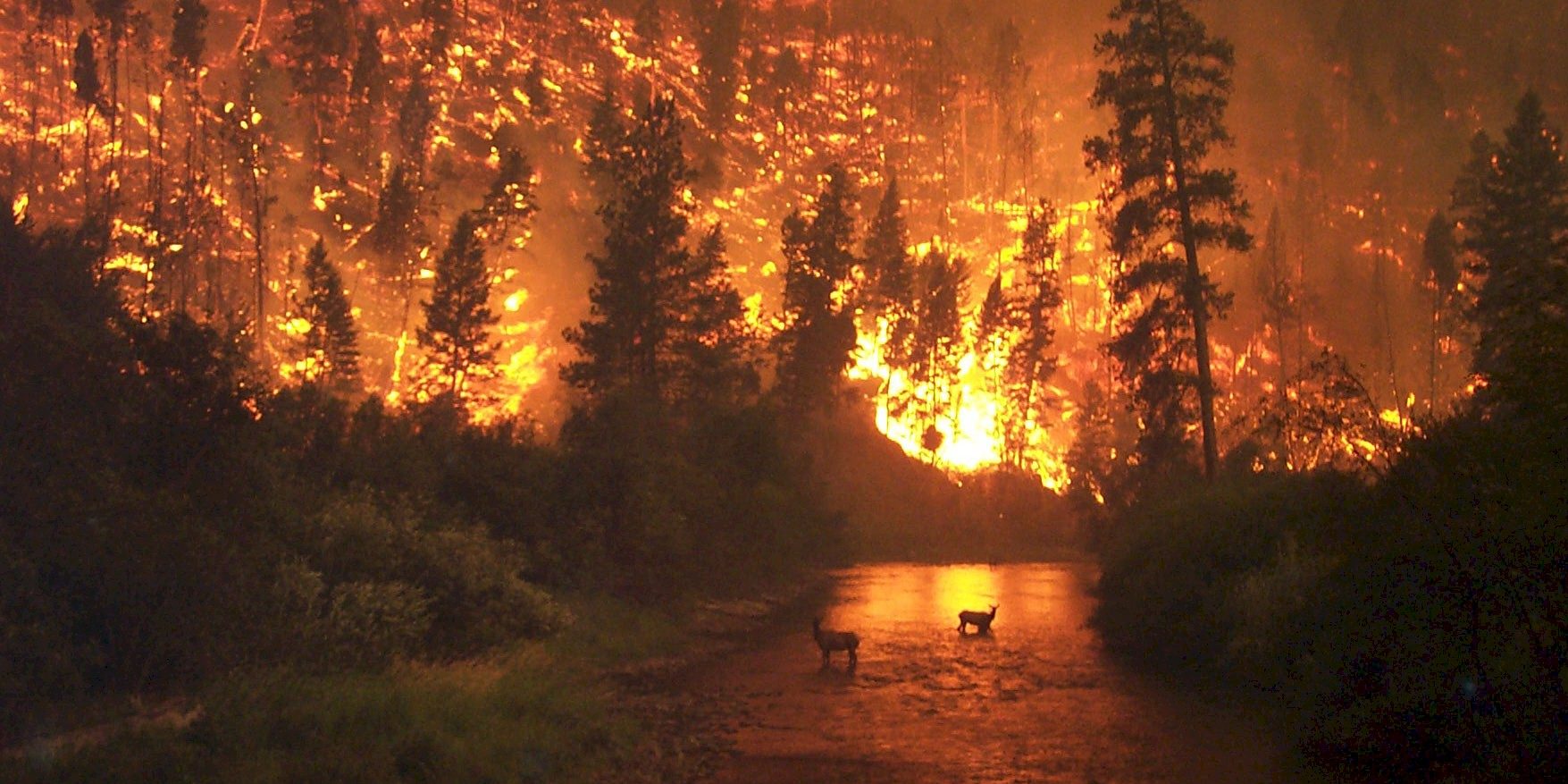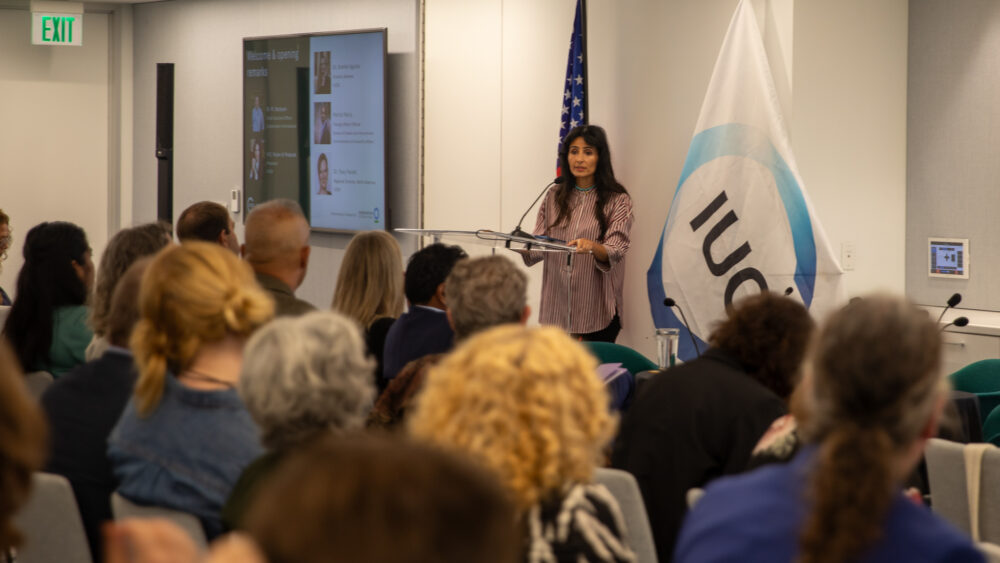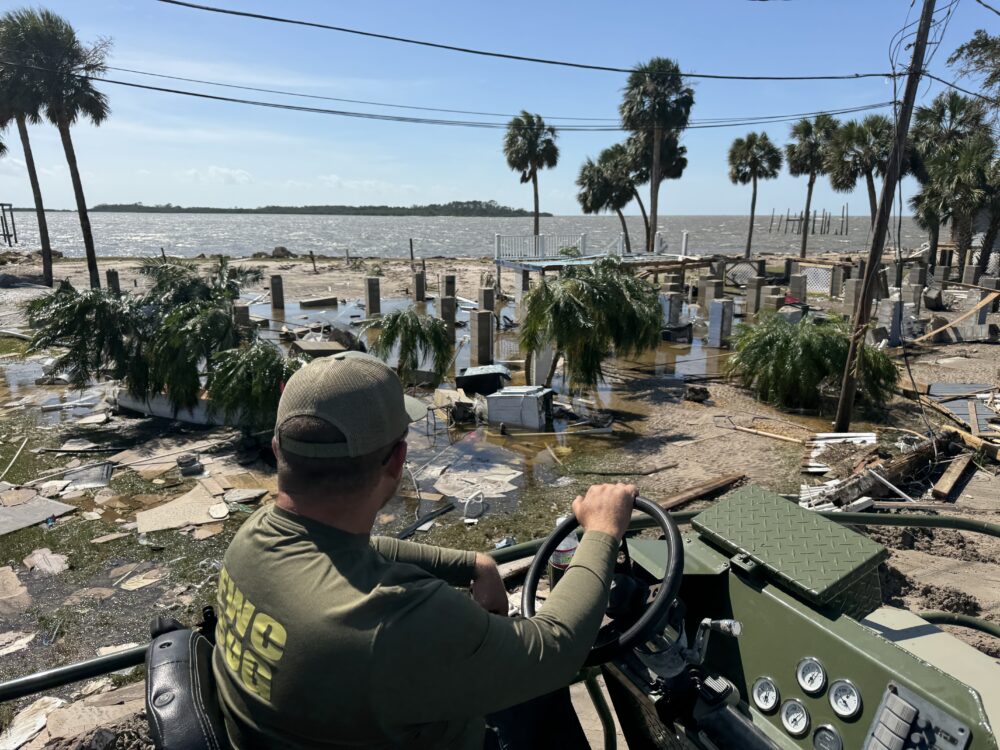We have much more to do and your continued support is needed now more than ever.
Fire, Water, and Our Public Lands
Stop pointing fingers, and support effective forest-water partnerships

Just how many “wake up calls” can we stand in the year 2020? On top of social, economic, and political disruptions and unrest, we’ve experienced epic wildfires that directly impacted millions of people throughout the western United States. Colorado experienced historically large fires into October, well beyond the usual fire season, and California’s fires threaten to extend to a year-round phenomenon. In late summer, the smoke from these fires drifted all the way to the skies over New York City and Washington, D.C.—making visible a wicked challenge that’s been building for decades.
What have we learned, and what can we do in response?
We know that our western forests are adapted to fire, but we’re seeing more frequent and intense fires.
My colleague at the National Wildlife Federation, David Willms, recently published a trenchant summary of this year’s fires, titled The West is Burning, and it is Our Fault. He summarizes research about the historical role of fire in this region, the legacy of forest management linked with vigorous fire suppression policies, as well as the impacts of a changing climate, invasive species, and human behavior. In the end, he notes, we can’t blame a single cause for today’s conflagrations, and we have to approach the issue with robust solutions that match the complexity of these causes.
As described in more detail in the National Wildlife Federation’s Megafires report, these complex factors are extending fire seasons throughout the West, as well as expanding the size and intensity of fires. The U.S. Forest Service has concluded that fire seasons are now on average 78 days longer than in 1970s. The area of forest burned annually in the Pacific Northwest has increased by nearly 5,000 percent since the early 1970s, while the area burned in the Southwest has increased by nearly 1,200 percent.
In other words, the fires of 2020 are not an anomaly. They are a preview of our future in a warming West. As vividly illustrated by the World Resources Institute, the increasingly frequent and severe wildfires in the western U.S. are a piece of a multi-part climate feedback system in which increased global emissions lead to higher temperatures, which then create drier, more fire-prone conditions; with more fires come more emissions, perpetuating the cycle.
After the 2002 Hayman Fire, Camp Creek and other streams serving Colorado’s Front Range population suffered severe erosion and sediment flows (geologist included for scale). Photos by Samantha Sherwood and Mike McHugh, Aurora Water
We know that these fires threaten our water and our health.
These changes threaten the sources of water essential to people and wildlife. Forested mountain watersheds provide over 60 percent of the drinking, farming, and industrial water in the West, and the water flowing in streams and rivers out of the mountains supports fish, wildlife, and a growing outdoor recreation economy. Although these forests evolved with fire, they are not adapted for the scale or intensity of fires we are seeing today. After uncharacteristically large fires sweep across a watershed, the resulting floods and debris flows compromise water quality and water security, and cost water utilities (and thus their customers) billions of dollars to address.
According to a 2017 research paper, nearly every watershed in the western U.S. will face increased erosion following wildfires by the 2040s, with more than a third of them experiencing doubled sedimentation rates. That will further impact water quality for fish living and reproducing in these streams and threaten the security of downstream water supplies for people—on top of other threats, such as toxic chemicals that wildfires can release into municipal water supplies.
Beyond water quality and supplies, we are beginning to understand the immediate and long-term human health impacts from the smoke generated by wildfires that persist for days and weeks, sometimes longer. Researchers at Stanford University estimate that wildfire smoke in California caused the deaths of at least 1,200 and possibly up to 3,000 people between August 1 and September 10, 2020. And a University of Montana study indicates that healthy people exposed to heavy wildfire smoke can experience long-term damage to lung function.
Thus, for the sake of our fish and wildlife and the security of the clean water and air that sustain us, we need to dramatically increase our actions and investments to restore resilience to our forested watersheds, while also reducing the greenhouse gas emissions that contribute to the warming temperatures and feed this climate feedback system.
We know what to do.
The challenge is enormous, and our response has to be equally ambitious. For its part, the National Wildlife Federation recommends a suite of legislative and administrative actions, including ramped up investments and incentives, to achieve large-scale, climate-informed, ecologically appropriate forest restoration.
We’re supporting these recommendations through our partnership with the Healthy Headwaters Alliance, a network of western water innovators including water utility executives and directors, federal land managers, scientists, community and water justice leaders, and conservation professionals who share a commitment to equitable, science-based actions to build resilience back into the critical forested, headwaters of the West’s streams and rivers.
The Healthy Headwaters Alliance advocates for policies and investments that protect public watersheds and improve resilience through management actions that work with ecological systems—not just reducing fuels or decreasing forest density for wildfire hazard reduction, but for achieving overall healthy, and thus resilient, forested watersheds.
We can expand and learn from existing models.
- On Colorado’s Front Range, public land managers collaborate with water utilities, conservation groups, and university researchers to engage in strategic forest thinning, prescribed burns, treatments for invasive species, and other actions to build forest resilience on a landscape scale, across federal, state, and private lands.
- In California, the U.S. Forest Service supports this type of collaboration between water utilities and land managers in the pursuit of healthy landscapes with a public-private investment partnership called the Forest Resilience Bond (FRB), developed by Blue Forest Conservation and the World Resources Institute, and designed to accelerate the pace and scale of forest restoration, fire risk reduction and watershed protection on public lands.
- Also in California, water utilities are partnering with the Forest Service, rural counties in the Sierra Nevada Mountains, conservation groups including The Nature Conservancy, and other stakeholders to invest in improving the health and resilience of forests in the American River watershed, through the French Meadows Project, and in the North Yuba watershed, through the North Yuba Forest Partnership.
- In Oregon, the floods that will follow this year’s intense fires in the McKenzie River watershed—the sole source of water for the city of Eugene—will be mitigated by floodplain restoration work already underway thanks to a collaborative partnership between the local utility, landowners, and the Forest Service.
- And in New Mexico, the Albuquerque Bernalillo County Water Authority invested $1 million in a forest restoration initiative led by the Rio Grande Water Fund—all aimed at reducing the odds of repeating the loss of a primary water source as a result of the 2011 Las Conchas Fire. Today the Fund engages 90 organizations and aims to restore 600,000 acres of the forested watershed to reduce the risk of catastrophic fire and subsequent contamination of the Rio Grande.
As the smoke settles from an extraordinarily challenging fire season, let’s take stock of what we’ve learned, and recommit to working together to restore and protect the precious watersheds that sustain people and wildlife in the western United States. Pointing fingers won’t solve our problems. Effective, inclusive, and solutions-oriented partnerships supported by stronger policies and investments will move us in the right direction.























